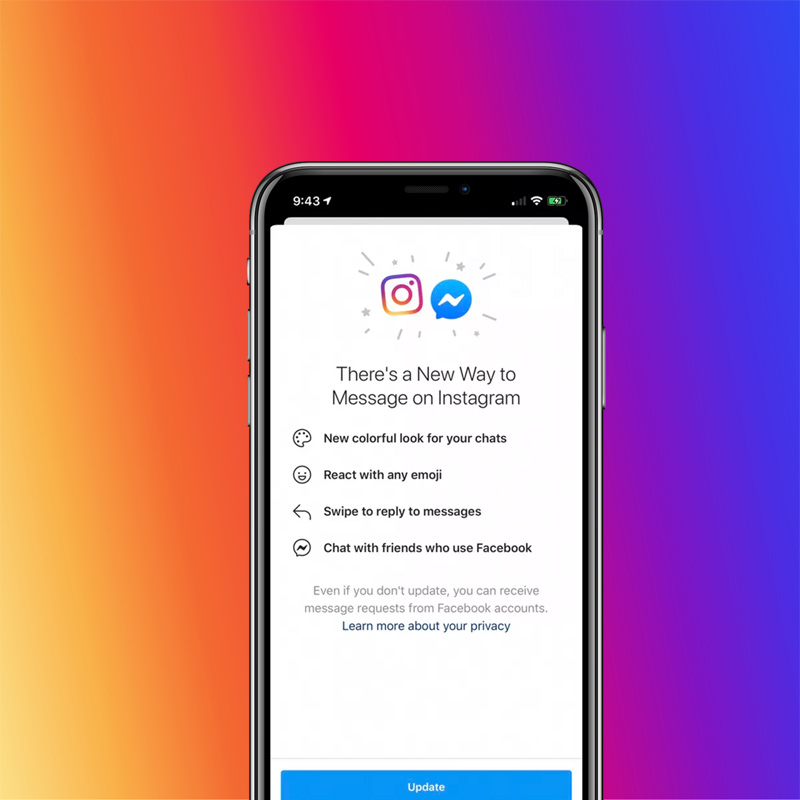
It was only in 2019 that Facebook announced its plan to merge its three big messaging networks.
CEO and founder Mark Zuckerberg said that the company hoped that it could combine WhatsApp, Facebook Messenger, and Instagram Direct into one same service.
In 2020, Facebook finally took its first steps in unifying its messaging features, by first popping up a message on Instagram saying:
"There's a new way to message on Instagram." There is also the "chat with friends who use Facebook."
Besides the cross-communication ability between users on Instagram and Facebook, the update also promises a "new colorful look," emoji reactions, and the way to simply swipe to reply to messages.
To introduce the first step of the merging, Facebook redesigned Instagram's messaging icon in the top right of the app to look like the Facebook Messenger logo when users update.
The upgrade that is initially optional, is spotted across iOS and Android across the world, in languages such as English, Korean, and Spanish.
It should be noted here that as a dominant player in the social media industry, Facebook have acquired Instagram for $1 billion in 2012, and bought WhatsApp in 2014 for $19 billion.
So it does makes sense for Facebook to merge a thing or two (or more) from one product to another.
Facebook was said to be rebuilding the underlying infrastructure of the apps so users who were on only one of its apps could connect to others using different Facebook apps.
Zuckerberg has also said he wants the system to be end-to-end encrypted.
By integrating its most popular apps, Facebook may have a chance to compete more directly with Apple’s iMessage.
At this time, the world's biggest (cross-platform) messaging app is Facebook's WhatsApp. According to the statistics from Statisca, the popular app has around 2 billion users. Facebook Messenger is the second biggest service in Statista's list, with 1.3 billion users.
The third is, Tencent's WeChat, followed by QQ, Telegram and then Snapchat.
That list doesn't include Apple's iMessage.
The reason is because iMessage is an instant messaging service unique to Apple devices, meaning that it isn't cross-platform. So the only data that is reliable, is only from Apple.
Apple once said that in 2019, it had more than 900 million active iPhone users out there, and 1.4 billion active Apple devices in total. But since Apple users often have more than one Apple device, considering how strong Apple's walled-garden is, it's not right to claim that one unique user only has one device.
Because iMessage is the default iOS texting service, it can be considered that the number of iMessage user is very close to the total number of iPhone users.
This was reflected by Zuckerberg, who was calling iMessage as Facebook's "biggest competitor by far" in the messaging space in 2018.
By merging WhatsApp and Facebook Messenger, Facebook has the capacity for creating a 3.3 billion user network, accounting for about 43% of the world's population into one single messaging service.
